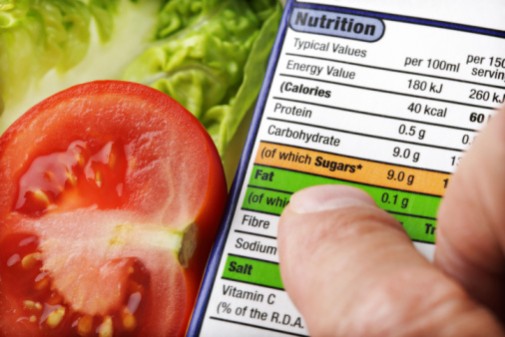Red light, green light – for food?

Food packaging can be very misleading. A package may be labeled “fat-free” but the substitute ingredients can make it just as high in calories as the original product. Or a food label can state that it’s made with wheat or multigrain, but if it’s not labeled “whole grain,” then you won’t be getting the nutrients, fiber and vitamins of a whole grain product.
Since part of selling a product is in its packaging, marketers use the package to differentiate one product versus its competition. All of the “sell” messages can make things very confusing for consumers. In fact, nearly 59 percent of consumers have a hard time understanding nutritional facts on food packaging, according to a Nielsen survey.
In an attempt to make the good and the bad easier to recognize, Massachusetts General Hospital tested a “Green Light, Red Light, Eat Right” campaign in their cafeteria. The results of their study have been published in the American Journal of Preventative Medicine.
In March 2010, they started labeling food with straight-forward tags: green for healthy items, yellow for less healthy items and red for unhealthy items. They also re-organized the foods so that healthy products were easier to see than unhealthy items. To make sure everyone understood the tags, signage was posted to explain the objective of the new coding system. Their cash register system, which contained base line information from previous months, tracked the color categories of the purchases.
After 24 months, the research team analyzed the results. The sale of red items went down from 24 percent to 21 percent. The largest decrease was in red-labeled beverages, such as regular soda, that went from 27 percent to 18 percent. Meanwhile, the sale of green items went up 41 percent to 46 percent.
The study authors state, “These results suggest that simple food environment interventions can play a major role in public health policies to reduce obesity.”
One of the study’s authors, Dr. Thorndike, suggests applying this concept at home by having color coding and placing healthy food in easy to reach places.
“While the detailed information on a nutrition label is important to review, it’s hard to do that every time you want to eat something. Color coding and organizing food by its health content is an interesting, universal method that can be used to quickly communicate how healthy an item is,” says Dr. Tony Hampton, a family medicine doctor with Advocate Medical Group.
“And when people are in a hurry, trying to grab food on the go, coding can be a reminder to keep nutrition top of mind while making a selection.”
Related Posts
Comments
One Comment
About the Author
health enews staff is a group of experienced writers from our Advocate Health Care and Aurora Health Care sites, which also includes freelance or intern writers.


















This is a really interesting concept! Would love to see it implemented in more places to help people make healthy decisions!